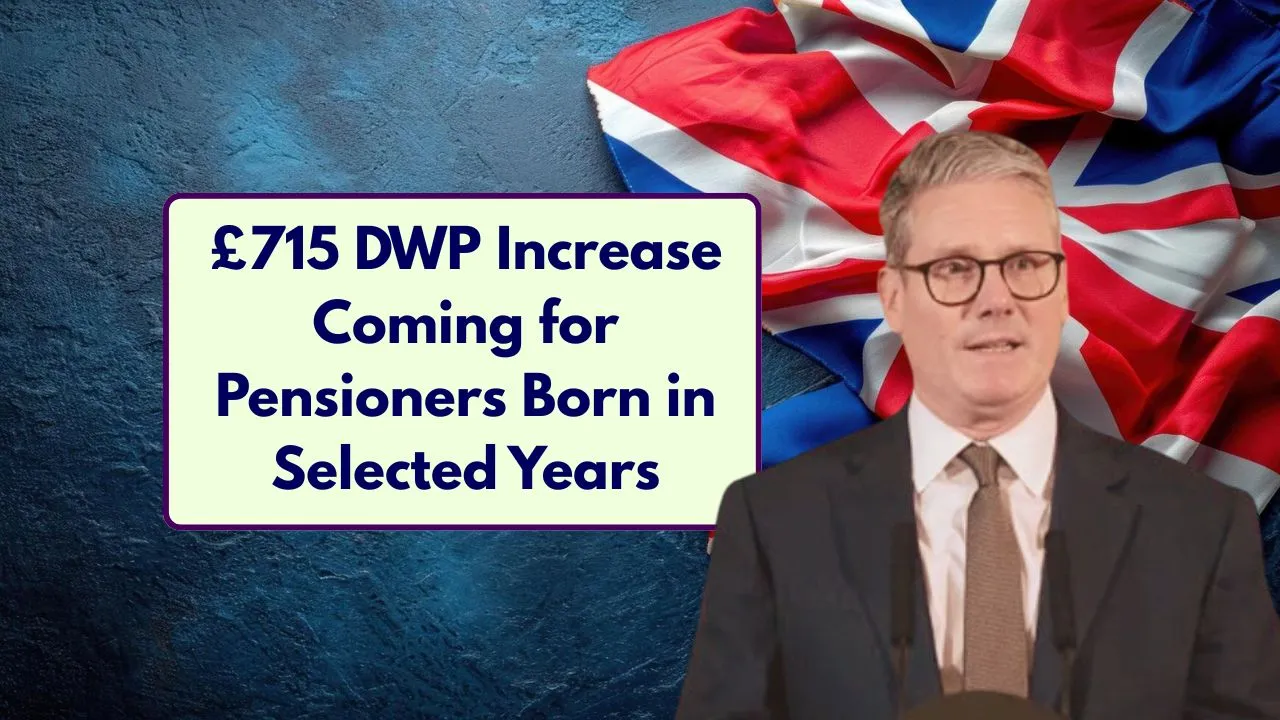DWP increase for pensioners: A significant financial development is on the way for millions of pensioners across the UK. Those born before 1959 are expected to receive a £715 increase to their State Pension starting in April 2026. This change stems from the government’s continued commitment to the Triple Lock—a policy designed to ensure that pensions rise each year in line with either inflation, average earnings, or a minimum rate of 2.5%, whichever is highest. As living costs remain a concern for many retirees, this increase aims to provide some financial relief.
The upcoming DWP increase for pensioners reflects broader efforts to secure income stability for older citizens. The projected rise, based primarily on wage growth, will benefit those on both the Basic and New State Pension. While this news is generally welcomed, questions remain about how far the increase will stretch in the face of rising living expenses and tax deductions.
Understanding the DWP Increase for Pensioners
The DWP increase for pensioners represents a vital measure to ensure financial dignity during retirement. Unlike standard cost-of-living adjustments, this increase is calculated using the Triple Lock system, which secures pension growth against economic shifts. For those born before 1959, the increase reflects not just a statutory adjustment but a lifeline that can help manage rising prices and unexpected expenses. As this policy continues to evolve, it reinforces the government’s responsibility to maintain a pension system that adapts to inflation, wage changes, and broader economic trends. Pensioners affected by this rise are encouraged to view it as both a financial advantage and a chance to improve their budgeting and savings strategy for long-term stability.
DWP Increase for Pensioners: Key Details
| Pension Type | Current Rate | New Rate (April 2026) | Annual Increase |
| New State Pension | £230.25/week | ~£244/week | £715 |
| Basic State Pension | £176.45/week | ~£187/week | £548.60 |
| Eligibility | Born before April 6, 1959 | Automatic – no application required | |
| Main Factor | Wage growth (approx. 6%) | ||
| Tax Implications | Up to 20% may be deducted for some pensioners | ||
| Financial Tips | Use savings accounts, fixed-rate bonds, review tax status |
What the Triple Lock Means for Pensioners
The Triple Lock ensures that pensions don’t fall behind economic trends. Each year, the State Pension increases by the highest among three figures: inflation, average earnings growth, or 2.5%. This guarantees that retirees retain purchasing power even as prices and wages shift.
For 2026, wage growth is leading the metrics, likely resulting in a six percent rise. For those on the New State Pension, this translates to an annual gain of £715. Those receiving the Basic State Pension will see an annual increase of around £548.60. These updates apply automatically to eligible pensioners and are adjusted each April.
The Role of Wage Growth and Inflation
Currently, wage growth is outpacing inflation, which is what makes it the likely driver behind the 2026 pension adjustment. As wages increase, the State Pension follows suit, ensuring that pensioners’ incomes don’t lag behind the working population. This also serves as a safeguard against economic shifts, helping retirees manage essential expenses with more stability.
Financial Advice for Pensioners
With an increase on the way, pensioners are encouraged to make smart financial decisions to stretch their money further. Two highly recommended strategies include:
1. High-Interest Easy Access Accounts
These accounts offer flexibility while earning interest. They’re suitable for pensioners who need access to their money at any time, especially during emergencies or to cover monthly expenses.
2. Fixed-Rate Bonds
Ideal for those who can afford to set aside funds, fixed-rate bonds typically offer higher interest rates over a fixed term. They are a solid option for earning better returns on savings.
Both tools allow retirees to grow their pension increment safely while maintaining some level of financial flexibility.
Concerns About the Real Value of the Increase
Despite the anticipated £715 increase, several pensioners have voiced concerns. The most common issue is taxation. Pensioners who receive more than the personal allowance (£12,570 annually) may have the increase taxed at 20%, reducing the net benefit to approximately £550.
Beyond taxes, the cost of living remains a major concern. The price of food, energy, and other essentials continues to climb. For many retirees on a fixed income, even a notable pension increase may not fully offset rising expenses. Some have pointed out that the extra income could quickly be absorbed by higher council tax, utility bills, or grocery prices.
The Political Importance of the Triple Lock
The government’s decision to maintain the Triple Lock speaks to its importance as a political and social policy. With an ageing population and growing financial pressures on the elderly, the policy is more relevant than ever. It serves as a key promise that gives pensioners confidence in their long-term income stability.
Maintaining this guarantee also reassures future retirees that the pension system will continue to reflect the economic realities they face. The consistency of this policy helps foster trust in public financial planning and retirement systems.
What Pensioners Should Do Now
To ensure they’re prepared for the April 2026 update, pensioners can take a few practical steps:
- Review Your Pension Forecast
Check how much you’re set to receive and whether the increase puts you over the tax-free threshold. - Explore Tax Planning Options
Understanding your income bracket and potential deductions will help you manage the impact of the pension increase. - Consider Investment Opportunities
Place part of the increase into interest-bearing accounts or bonds to secure better returns. - Evaluate Eligibility for Additional Benefits
Some pensioners may also qualify for Pension Credit or other forms of government assistance.
Taking these actions can help pensioners make the most of the increase and ensure it contributes meaningfully to their financial well-being.
Forward Planning for Pensioners
As the financial landscape continues to shift, pensioners should remain proactive. Regularly reviewing savings, income, and tax obligations can help avoid surprises and improve financial outcomes. Consider setting up a consultation with a financial advisor, especially if you’re managing multiple income sources or unsure how taxation will affect your benefits.
Staying updated on pension policies, inflation rates, and economic trends also ensures that retirees can adapt as needed. While the current increase is a step in the right direction, long-term planning is key to financial security in retirement.
Final Thoughts
The upcoming DWP increase for pensioners is a welcome development for many, offering some relief against the ongoing rise in living expenses. While not a complete solution, it reflects the government’s ongoing commitment to protecting pensioners’ incomes through the Triple Lock system. For those born before 1959, the rise could make a real difference—especially when paired with strategic financial planning.
Still, with concerns over taxation and inflation, the true value of the increase will vary depending on individual circumstances. Pensioners are advised to explore savings options, review their tax exposure, and seek advice if needed to make the most of the additional income.
Call to Action
Are you prepared for the pension increase in April 2026? Now is the time to take action—check your pension forecast, review your finances, and explore savings tools that can help you grow your income. Share this guide with fellow pensioners so they too can benefit from the update. With the right planning, you can make every pound of your pension go further.













